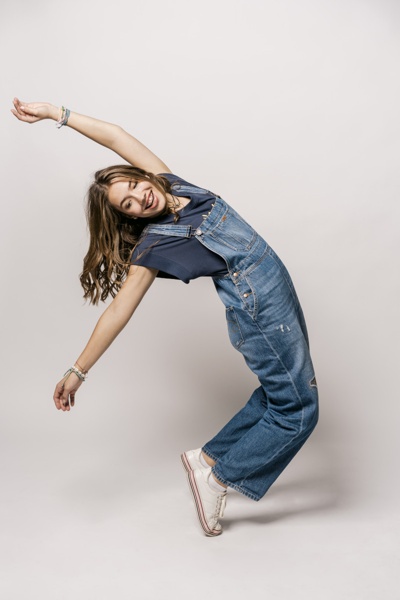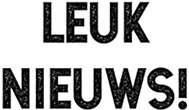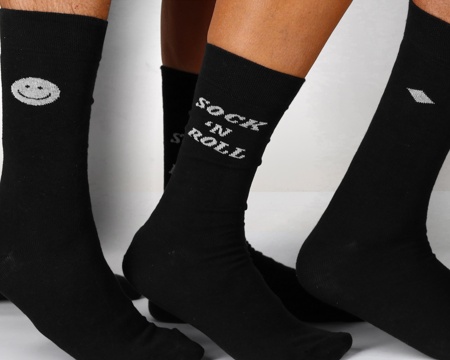History
| Lee Cooper | Dedicated to denim
2000 - present
2009
Lee Cooper collaborates with UK-based artist Ronzo Jonny Fu who produces the
art project "City Escapades!” presented by east London collective All City.
Shown in a pop up store in Covent Garden for two weeks, the exhibition showcases
some of the collective’s latest work along with customised Lee Cooper denim. A
dozen pairs of customised jeans depicting urban landscapes and graphics are
available to purchase from the pop up store.
2008
Lee Cooper collaborates with french model and actress Lou, bringing back the
brand’s heritage with previous brand ambassadors (and Doillon’s parents) Serge
Gainsbourg and Jane Birkin.
2008
Lee Cooper collaborates with Parisian It boy Ora Ito, a specialist in
interior and technical design. The designer creates a new centenary logo, a
collection of t-shirts, jackets and jeans all based on
Origami.
2008
Lee Cooper supplies denim jackets and suits for over 1,200 members of the
British Olympic and para-Olympic team for the opening ceremony of 2008 Beijing
Olympics. The collection aims to break the mould of traditional parade and
formal wear, and is designed by Olympian Sarah Winckless, a gold medallist in
rowing to have both comfort and style.
2007
French designer Jean-Charles de Castelbajac joins forces with Lee Cooper to
create a collection called JCDC Denim. The collection is took inspiration from
British 1960’s rock icons and rejuvenated Lee Coopers musical
roots.
2003
Formerly known as Red Diamond, the RDLC collection consists of three stories
including a classical line called The Great British male and Young Rockers, an
edgy range offering extreme washing and slimmer silhouettes.
2001
Lee Cooper confirms their commitment to Xfit Lycra, to create the best
fitting denim in the world. And with Lee Cooper’s new brand ethos, they create a
range of Aqua denim, a modern water resistant range of jeans. Following this,
Lee Cooper releases the Platinum collection, a distinctive range themed on
British heraldry. Attention to details include elaborate embroidery, mother of
pearl buttons as well as exclusive platinum
thread.
2000
Lee Cooper is recognised as one of the top selling authentic European denim
brands. The company understands that innovation, comfort, style and performance
is what the new generation are looking for, and with that in mind Lee Cooper
introduces “Perform Your Life!” a new practical ethos for the brand.
1990's
1995
Lee Cooper launches a new collection called ‘3 by 1’, the first 5 pocket
slack jean to hit the market.
1994
The long standing Lee Cooper logo is changed to the one that we recognise
today, and the LC range is introduced.
1992
As demand increases, all production is moved to Lee Cooper’s world class
factory in Tunisia. There is a major growth in global reach, with new licensed
markets in former Eastern Europe, Asia and South
America.
1990
As eco-awareness grows, Lee Cooper makes use of enzyme washes for the first
time.
1980's
1988
Stretch denim becomes popular again, and the fashion world is awash with Lee
Cooper’s “acid wash” jeans.
1986
Punk music and fashion inspire Lee Cooper to offer unwashed jeans for the
first time in 5 years. The brand later release “distressed”
jeans.
1985
Lee Cooper launch a new softer range of denim, emphasising its European
origin.
1983
Fashion changes again, and Lee Cooper launch the first "jogging jean" with
drawstring. Legendary fashion photographer and artist Jean Paul Goude is brought
on board and harnesses hard glamour and breathtaking imagery for his innovative
yet unorthodox approach to the Lee Cooper
campaign.
1982
The Rolling Stones sponsorship takes Lee Cooper to concert fans across the
UK, establishing Lee Cooper as the go-to brand for rockstars and music
fans.
1980
Lee Cooper becomes a sponsor of legendary rock bands including the Rolling
Stones, UB 40, Serge Gainsbourg, and Rod Stewart. The hipster jean makes a
comeback as stretch denim hits Europe for the first time and becomes an instant
success.
1970's
1978
Punk and New Wave music hit the clubs with a vengeance, and so do Lee
Cooper’s “stonewashed” jeans.
1976
Checks made an unexpected return to the Lee Cooper’s product range. As the
rock sound of the sixties gave way to the disco sound of the 70's, colourful
corduroys and other fabrics come back into style.
1975
An ultra-modern, environmentally conscious production facility in Tunisia is
opened. Lee Cooper tank tops and hipsters lead the way across the universities
of Europe.
1971
Lee Cooper mini skirts cause a stir across Europe as hemlines go from mini to
maxi to mini again. The Lee Cooper product range introduces hot pants for girls,
suede jeans for men and safari suits. Then come the launch of the Lee Cooper
“love” jean, the “cherry jean” and the first 32” bell-bottom
flair.
1960's
1969
Flower power, peace and love result in the first Lee Cooper decorated
jeans.
1964
“Shrink to fit” arrived on the scene, producing the popular “shrinker
jean.”
1960
Lee Cooper produce tartan slacks, the hottest item in the clothing range. The
brand also start producing jeans for Wrangler.
1950's
1955
Lee Cooper thrives to become a premium brand in Britain, designing numerous
original cuts for men and women and eventually launching slacks and jeans as two
separate product lines. They expand by opening a new factory in
Holland.
1952
Lee Cooper introduces jeans for ladies. When Lee Cooper launches the “front
zip” for their ladies jeans, there is an outcry from a shocked public. The range
for women increases in size, and ladies dungarees appear the following
year.
1950
Lee Cooper’s work wear strengthens the brand’s reputation for making tough,
hardwearing, high quality work clothes, and is in turn embraced by 80% of the UK
market. The Lee Cooper brand appears in print for the first time.
1940's
1930's
1939
As the Second World War approaches, Morris Cooper is contacted by the War
Office, who places an order for a thousand denim fatigue suits. From this point
the company is officially requisitioned by the British forces to manufacture
uniforms for the armed forces.
1937
With a different direction, Morris Cooper opens a brand new factory in
Stratford in East London. Over the year, the company grows significantly and as
a result makes a profit by the end of the first year.
1931
Lee Cooper is known for specialising in what was then known as ‘Navy’
clothing, which included denim, workwear, trousers and
jackets.
1900's - 1920's
1914
With the arrival of the first world war, the company converts its production
of workwear clothing to military uniforms. Now known for creating uniforms for
the British troops, Lee Cooper demonstrates strength and durability in its
long-lasting products.
1908
Morris Cooper creates workwear production company the Morris Cooper factory,
which later becomes Lee Cooper. Since its humble beginnings in the East end of
London at a run-down premises on 94-96 Middlesex Street, Lee Cooper has now
become recognised as Europe’s first and oldest, authentic denim
brand.
Back to top
X
Leuk nieuws lees je in onze newsletters.
Het beste nieuws is dat je
10% KORTING
ontvangt op je volgende bestelling bij
inschrijving op onze nieuwsbrief.
X
Wil jij ons goede doel steunen en tegelijkertijd een
hartverwarmend cadeau geven?
Steun TEJO en koop hier je sokken
Om U beter van dienst te zijn maken wij en derde partijen gebruik van cookies.
Akkoord
Volg me niet





